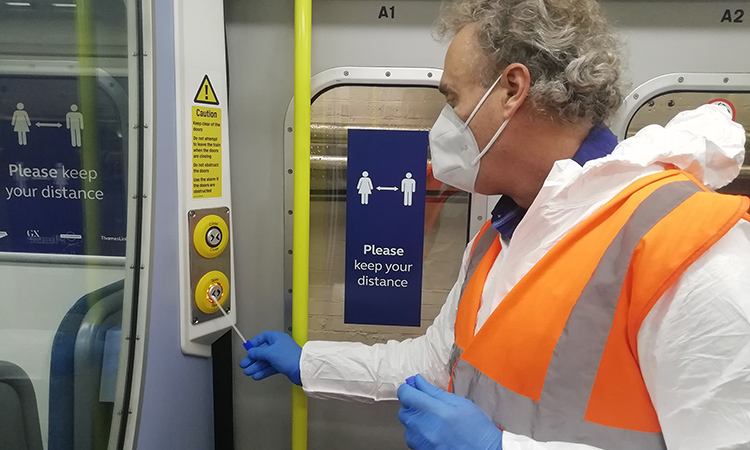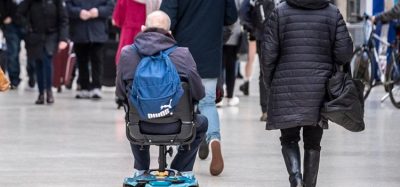Govia Thameslink Railway trains test negative for COVID-19
Posted: 16 November 2020 | Global Railway Review | No comments yet
Laboratory tests have found that the COVID-19 viruscide being used on Southern, Thameslink and Great Northern trains is successfully working.


Credit: Govia Thameslink Railway
Independent laboratory results show that Southern, Thameslink and Great Northern trains are testing negative for COVID-19 over three weeks after being treated with a long-lasting viruscide.
Operator of the three franchises, Govia Thameslink Railway (GTR), randomly selected carriages from all eight of its train fleets up to 23 days after the carriages were treated with the long-lasting viruscide.
Swabs were then taken from areas in the train carriages frequently touched by passengers and staff – such as grab rails, tables, toilet handles, door buttons and the driver’s power-brake controllers, which are in constant use.
The laboratory microbiological tests showed that there was no presence of COVID-19 on any of the surfaces tested.
Chief Operating Officer of Govia Thameslink Railway, Steve White, said: “We are carrying out a comprehensive testing regime of our trains to ensure that our customers can travel with confidence. Passengers can be reassured that the long-lasting viruscide we’re using, more than 100 extra cleaners and hospital-grade cleaning products are working.”
GTR, since the early days of the COVID-19 pandemic, has been using Adenosine Triphosphate (ATP) testing to prove that its intensive cleaning regime is working, keeping microorganisms at bay.
The long-lasting viruscide is part of a series of measures to keep passengers safe, across both trains and stations, that include:
- 100 extra cleaning staff at work: 40,000 extra labour hours in three months to enhance the cleanliness of our stations, trains and staff areas
- All 2,700 carriages across Thameslink, Great Northern, Southern and Gatwick Express are sanitised overnight using specially-procured short-term anti-viral sprays, with a focus on touchpoints
- High-pressure dry steam and microfibre units are used for enhanced cleaning. Bleach fogging is used for decontamination where someone has been confirmed as having COVID-19.
Related topics
Coronavirus/COVID-19, Passenger Experience/Satisfaction, Safety, The Workforce
Related organisations
Gatwick Express, Govia Thameslink Railway (GTR), Great Northern, Southern Railway, Thameslink






